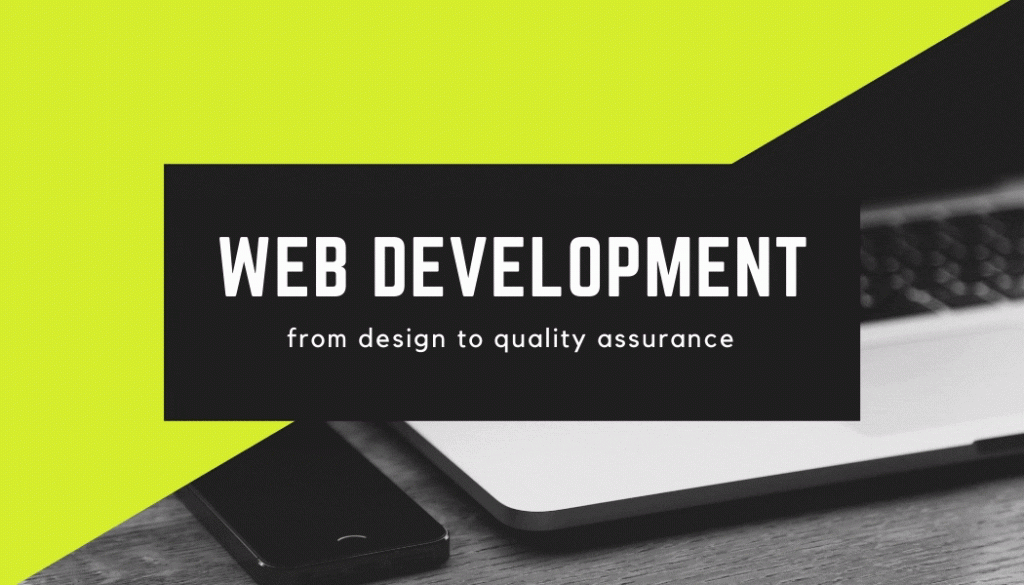Why is the process of Web Development important for Fashion and Luxury industries?
90% of sales of fashion were influenced by the online even before the Pandemia.
This means that the ability of fashion & luxury companies to deliver quality websites and applications has become vital for the success of the brand.
The other relevant information to consider is that fashion & luxury brands are extremely attent to the details, therefore the fashion web applications need to be designed and cured in every single detail. We will talk more about how to achieve excellence in web development when we talk about project management.
Let’s talk now about the web development process and address the topic of the workflow.
- The first step is to collect the Requirements. This is sort of a keyword and a mantra that you can take with you wherever you go and whatever you do, create or develop. Nothing can be done if the list of requirements is not created and approved by all necessary stakeholders. It’s easier said than done, try it!
- Specs. The requirements need to be analysed and transformed into functional and technical specifications. This are detailed descriptions of how the application or website is going to work, what can be done, and cannot be done, by the users of the website. Where things and buttons will lay. Which content and information will be needed. Which languages, payments methods, currencies, stock information, terms and conditions of purchase and so on. Everything needs to be detailed in the specification documents (Specs). You don’t want to develop a website that sells products to a country where it’s illegal to sell your products or that targets a country that don’t speak the language of your website. This is one of the reasons why agile project management methodologies are not suited for all types of projects.
- Wireframing. The next step is to take the specs and design the outline of the application. This outlines are called wireframes and can be animated or interactive to simulate the interaction that will be implmented in the application.
- Comps design. The outline are then dressed by the graphic designers to add the proper colors and images. The output of this process is the final mockup that will be implemented by the developers.
- Development. The programmers who will build the application will develop on one or more development environments, each developer, let’s say that developer X is working on the feature 1 of the specs, he/she will make sure that the feature is working on his development environment.
- Staging phase. Once the developers have completed the development on the Dev environment the branches are merged into a single server which is the staging environment. On the staging environment the content that will go live on the website will be uploaded by the developers to make sure that everything is working according to the specs.
- Quality assurance. The whole website or application has to be tested by the testing team. The testing team is usually a temporary organization made of a Quality Manager, the testers and the developers. The QA manager coordinates the tests, quality meetings and bug tracking. The testers, usually the persons who have designed the web app or created the specs, will test the web app to make sure everything is working to the expectations, and they will report the things that don’t work, aka bugs, the developers will fix the bugs.
- UAT. Before going live, the client, brand or the stakeholders at bullet point 1, will be involved to review and test the work done on staging environment and provide feedback, e.g. this is working this doesn’t work, change this, fix that. Let call this the first moment of truth, if the requirements have been collected and approved, the stakeholders should find correspondence between what they requested and what the developers have delivered.
- Go Live. The go live process usually follows a list of activities that need to be done in order for the new website or web app to be visibile to the public. Usually it involves transferring the files on the production environment, test that everything is working, configure the domain name and technical environment to show the website.
- Live Quality Assurance. After the website is live the client has the responsibility to check the website one more time and report any bugs to the developers. usually there is a warranty period after the go live in which the agency who has develop the website will take responsibility for fixing any bugs or problems with the application at no extra cost. After the warranty period any further problem reported by the client will reasonably incur into a fee to be fixed.
One note regarding bugs and other issues. The reason why the requirements are created is that the client signs them off and the agency commits to develop only the features included in the requirements. If the client in UAT or Live QA requests new features or to change the way the application works, these are not bugs and therefore they might incur in additional cost for development.
For the agile friends: hardly anything of the above is relevant if you follow agile development.

